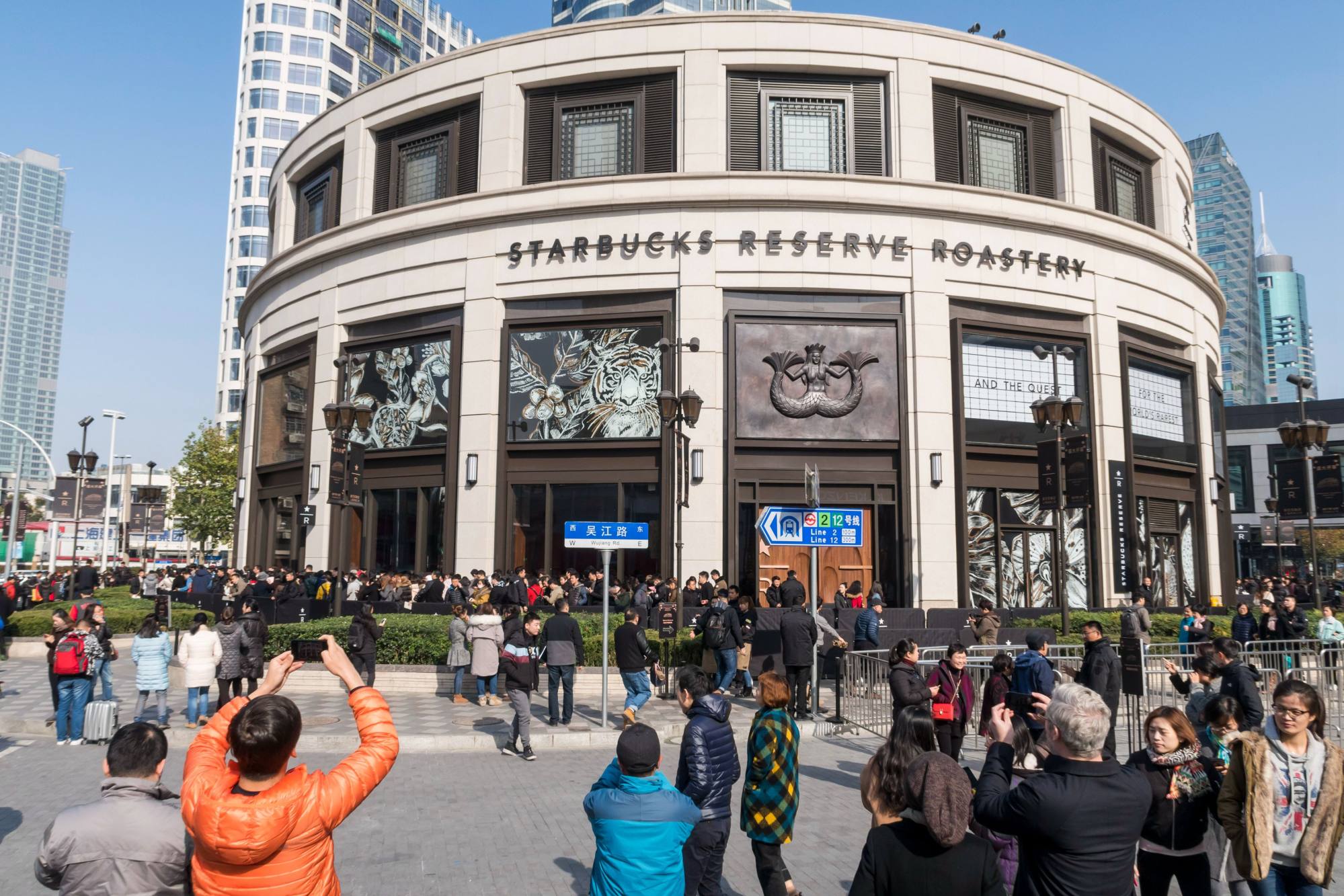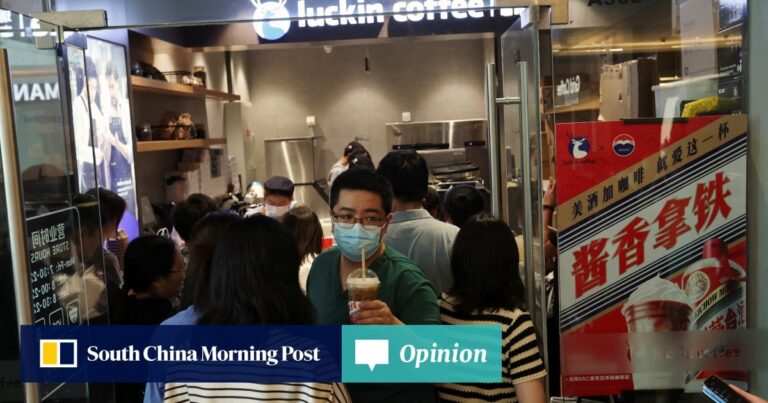Luckin Coffee doubled its store count to 18,590 last year (including 30 in Singapore, its only other market), and added a further 2,342 stores in the first quarter, all but two of which were in China.
This rapid expansion has hit Luckin Coffee’s profit margins, with same-store sales falling 20% year-over-year, but its average monthly customer count doubled to 60 million and quarterly sales rose 41.5% year-over-year to nearly 6.28 billion yuan ($869.5 million).
In just one year, Luckin Coffee has opened more stores in China than Starbucks has opened in 25 years, and now has more than double the number of Starbucks’ stores (7,093).

They create buzz and position Luckin Coffee as a trendy and innovative brand, helping Luckin Coffee remain relevant and a first-class brand in a competitive market.
The difference in performance between the two coffee giants can be attributed to several factors influencing Chinese consumer behavior and market trends.
Second, the shift to working from home and satellite offices is also changing consumer behavior, with more Chinese consumers preferring the no-frills takeaway options offered by Luckin over the more luxurious in-store experience offered by Starbucks, especially as the pace of Chinese society quickens.
Growing consumer preferences for the efficiency of takeout and pickup, combined with a penetration pricing strategy, have led Luckin Coffee to open smaller stores at a rapid pace, making it much easier for customers to find Luckin Coffee locations and helping the chain quickly gain market share.
This has given the local brand a competitive advantage in terms of convenience and customer experience. Luckin Coffee’s app ecosystem that integrates ordering, loyalty programs, and promotions has strengthened customer engagement and loyalty, making it a key factor in its rapid growth.
Starbucks, meanwhile, has been slow to adapt to these changing market trends, as its traditional sit-down model, focused on delivering a quality coffee experience in a comfortable environment, is less appealing to cost-conscious consumers with convenience-driven, busy lifestyles.

Starbucks has worked to introduce delivery services and digital payment options, but it has struggled to keep up with the pace and scale of Luckin Coffee’s digital efforts.
This shift in consumer sentiment has provided further impetus for local chains such as Luckin Coffee, which have successfully positioned themselves as a modern, innovative and distinctly Chinese alternative to foreign brands.
China’s coffee drinks market is a microcosm of the broader economic and social transformation taking place in the country. The rapid rise of homegrown brands like Luckin Coffee highlights the dynamic nature of the Chinese market and the opportunities it presents for companies that can overcome its unique challenges and harness its growth potential.
In conclusion, Starbucks has long been a symbol of premium coffee culture in China, but the rise of Luckin Coffee and other local brands signals a major shift in consumer preferences. As the market continues to grow due to increased consumption and changing consumer behavior, competition will intensify.
Coffee has become a major battleground for many investors due to its recurring nature and widespread popularity. China’s coffee drinks market is about to heat up, and companies that can adapt to the brewing trends will be in the spotlight.
Kok How Lee is an experienced economist, consultant and strategist. He does not hold any positions with Luckin or Starbucks.


